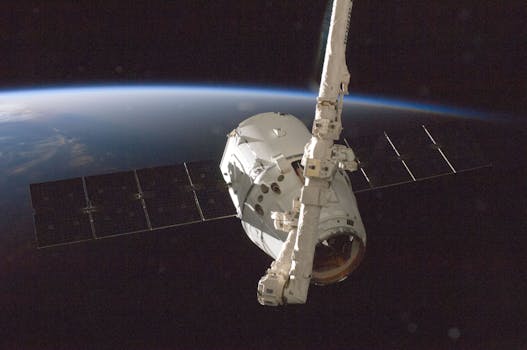From Geostationary to Low Earth Orbit: The Evolution of Satellite Telecommunications in 2023 – Satellite Telecommunications

From Geostationary to Low Earth Orbit: The Evolution of Satellite Telecommunications in 2023 – Satellite Telecommunications
Satellite Telecommunications has undergone significant transformations over the years, revolutionizing the way we communicate and access information. The evolution of satellite technology has enabled faster, more reliable, and widespread connectivity, bridging the gap between urban and rural areas. In this article, we will explore the evolution of satellite telecommunications, from geostationary to low Earth orbit, and its impact on the industry.
The first geostationary satellite, Intelsat 1, was launched in 1965, marking the beginning of satellite telecommunications. Geostationary satellites, also known as geosynchronous equatorial orbit (GEO) satellites, are placed at an altitude of approximately 36,000 kilometers above the equator. They have a fixed position in the sky and are used for a variety of applications, including television broadcasting, telecommunications, and weather forecasting. However, geostationary satellites have some limitations, such as high latency, limited bandwidth, and high launch costs.
In recent years, there has been a shift towards low Earth orbit (LEO) satellites, which are placed at an altitude of around 160 to 2,000 kilometers above the Earth. LEO satellites have several advantages over geostationary satellites, including lower latency, higher bandwidth, and lower launch costs. They are also more suitable for real-time applications, such as video conferencing and online gaming. Companies like SpaceX, OneWeb, and Amazon’s Kuiper Systems are launching constellations of LEO satellites to provide global internet coverage and other services.
The Benefits of Low Earth Orbit Satellites
Low Earth orbit satellites offer several benefits over geostationary satellites. One of the main advantages is lower latency, which is the time it takes for data to travel from the Earth to the satellite and back. LEO satellites have a latency of around 20-30 milliseconds, compared to 200-300 milliseconds for geostationary satellites. This makes LEO satellites more suitable for real-time applications, such as video conferencing and online gaming.
Another benefit of LEO satellites is higher bandwidth. They can provide higher data transfer rates, making them more suitable for applications that require high-speed internet, such as streaming and cloud computing. LEO satellites also have lower launch costs, which makes them more attractive to companies and organizations that want to launch their own satellites.
Challenges and Opportunities
Despite the benefits of LEO satellites, there are also some challenges and opportunities that need to be addressed. One of the main challenges is the need for a large number of satellites to provide global coverage. This can lead to an increase in space debris, which can pose a risk to other satellites and spacecraft. There is also a need for more advanced technology, such as more efficient propulsion systems and better antenna designs, to make LEO satellites more effective.
On the other hand, the shift towards LEO satellites also presents opportunities for new technologies and services. For example, LEO satellites can be used to provide internet connectivity to remote and underserved areas, which can help to bridge the digital divide. They can also be used for Earth observation, weather forecasting, and other applications that require high-resolution images and data.
Conclusion
In conclusion, the evolution of satellite telecommunications from geostationary to low Earth orbit has transformed the way we communicate and access information. LEO satellites offer several benefits, including lower latency, higher bandwidth, and lower launch costs. However, there are also challenges and opportunities that need to be addressed, such as the need for more advanced technology and the risk of space debris. As the satellite industry continues to evolve, we can expect to see new technologies and services emerge, which will further transform the way we communicate and access information.




